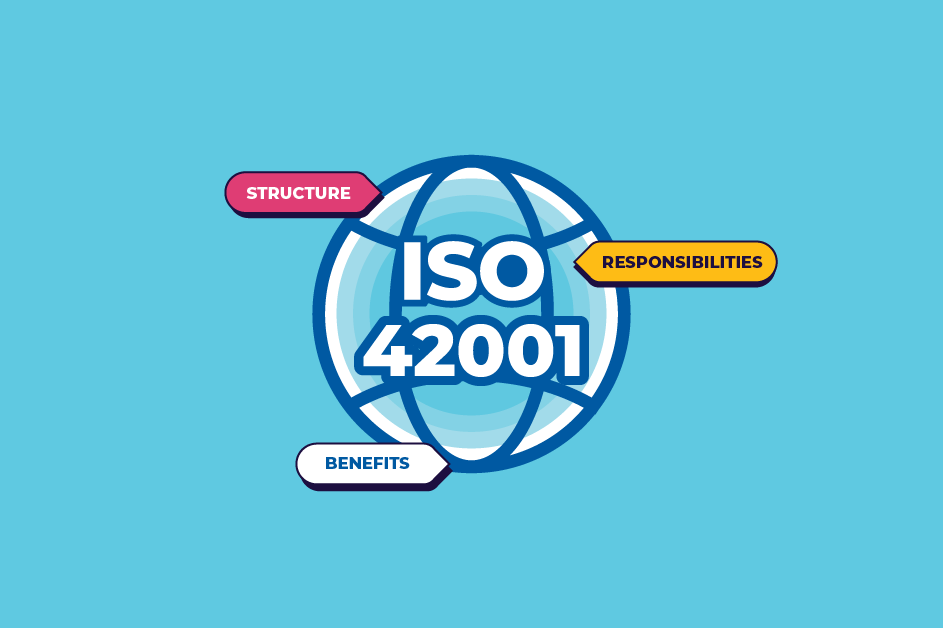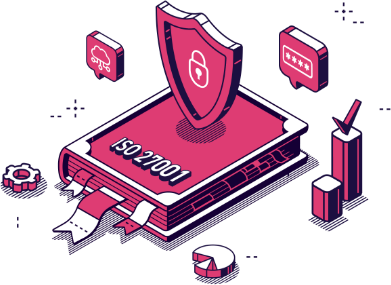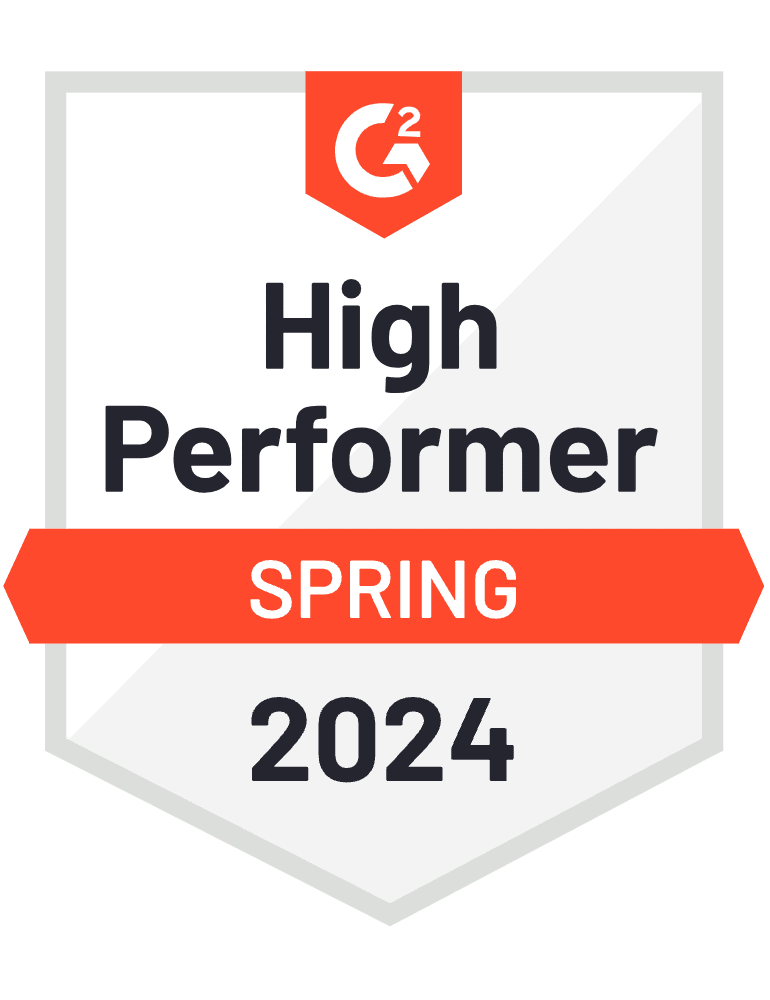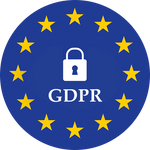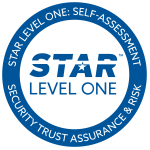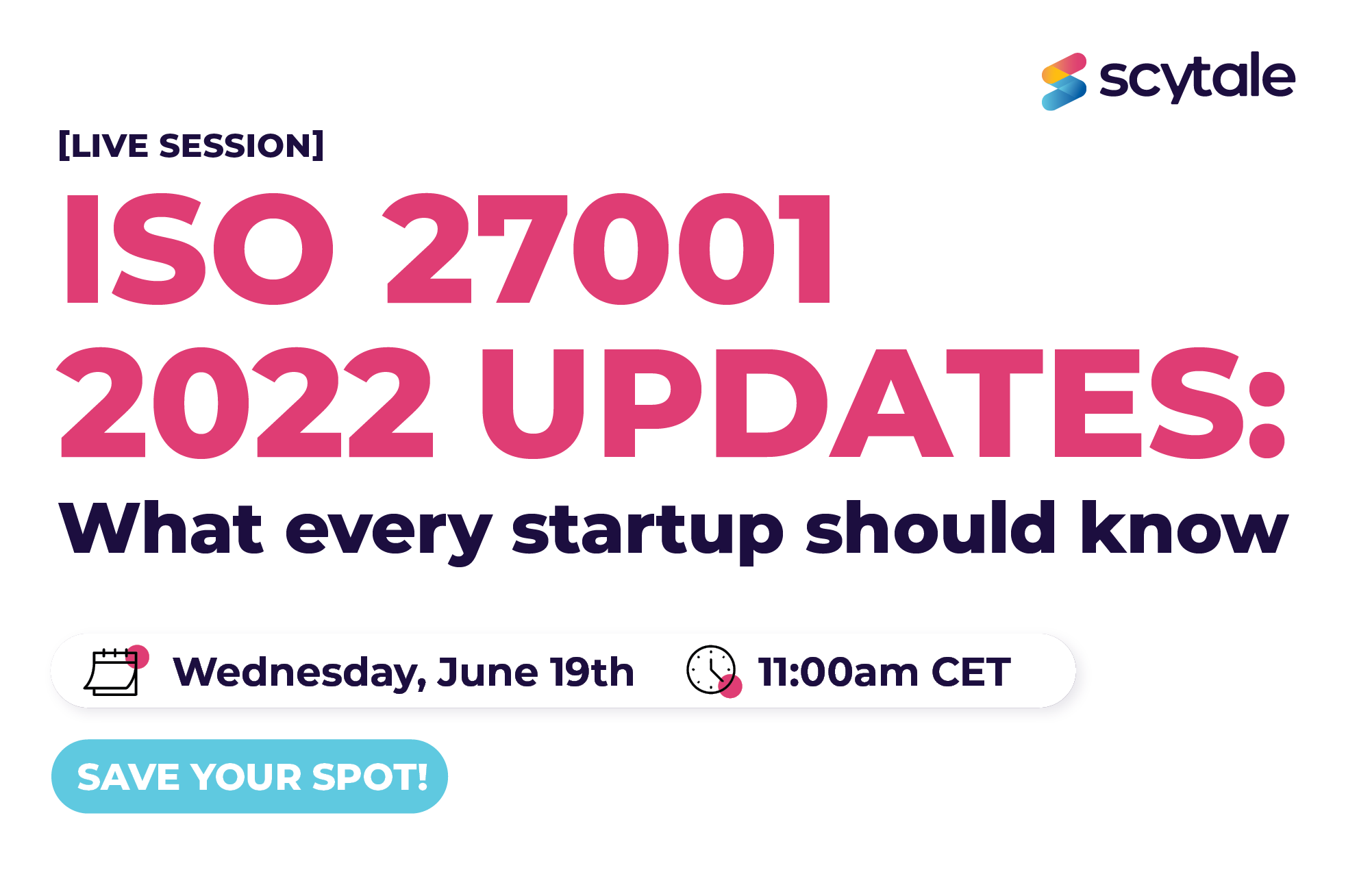You walk into the office and all everyone can talk about is AI. As AI continues to grow and transform industries, keeping company and personal data secure has never been more important. And that’s where ISO 42001 comes in. This international standard provides a comprehensive framework for tackling the unique challenges of AI data security.
This quick read will get you up to speed on ISO 42001 – what it is, who’s responsible for what, and why it matters. In just a few minutes, you’ll have the basics down about structure, the responsibilities it sets out, the benefits of getting certified, and how Scytale can help you every step of the way.
Understanding the purpose behind the standard helps put it in perspective, so you can thoughtfully consider how it might impact you and how you use AI tools in your own business. Sound useful? Read on for the lowdown on ISO 42001!
What is ISO 42001 and Why Does it Matter?
ISO 42001 is an international standard developed to provide guidelines and best practices for safeguarding data within AI systems. Introduced by the International Organization for Standardization (ISO), this framework aims to mitigate the risks associated with AI-driven data processing, storage, and transmission.
In the context of fast-evolving technologies, such as machine learning and deep learning, traditional data security measures may prove inadequate. AI systems often operate autonomously, making complex decisions based on vast amounts of data. As a result, ensuring the confidentiality, integrity, and availability of data within AI environments presents unique challenges.
ISO 42001 addresses these challenges by offering a structured approach to AI data security, encompassing risk assessment, data governance, security controls, monitoring, and compliance. By adhering to the principles and guidelines outlined in ISO 42001, organizations can establish robust security measures to protect sensitive information and mitigate the risks associated with AI technologies.

Key Sections and Structure of ISO 42001
ISO 42001 is structured to offer a systematic approach to AI data security, ensuring comprehensive protection across various stages of data lifecycle management. The standard comprises several key components:
Scope and Definitions
This section outlines the scope of the standard and defines essential terms to ensure clarity and consistency in interpretation. It establishes a common understanding of key concepts related to AI data security, facilitating effective implementation and compliance.
Risk Assessment and Management
ISO 42001 emphasizes the importance of conducting thorough risk assessments to identify potential vulnerabilities in AI systems. It provides guidelines for assessing risks associated with data breaches, unauthorized access, and other security threats, along with strategies for effective risk mitigation. By systematically evaluating risks, organizations can prioritize security measures and allocate resources accordingly.
Data Governance
Effective data governance is essential for maintaining the integrity and confidentiality of AI-generated data. ISO 42001 offers guidance on establishing robust data governance policies and procedures to ensure compliance with regulatory requirements and industry standards. This includes defining data ownership, classification, and access controls, as well as implementing mechanisms for data quality assurance and accountability.
Security Controls
The standard outlines a set of security controls tailored to the unique characteristics of AI technologies. These controls encompass various aspects of data security, including encryption, access control, data masking, and anomaly detection, among others. By implementing these controls, organizations can mitigate the risks associated with data breaches, insider threats, and malicious attacks, safeguarding sensitive information from unauthorized access or disclosure.
Monitoring and Compliance
ISO 42001 emphasizes the importance of continuous monitoring and evaluation to ensure compliance with security policies and regulatory requirements. It recommends implementing mechanisms for real-time monitoring of AI systems and conducting periodic audits to identify and address security gaps. By proactively monitoring security incidents and compliance issues, organizations can detect and respond to threats more effectively, minimizing the impact of potential breaches or non-compliance penalties.
Need quick answers for questions relating to ISO 42001? Meet Scy – your go-to companion bot for all things ISO 42001 compliance.
Roles and Responsibilities under ISO 42001 Compliance
ISO 42001 assigns specific responsibilities to various stakeholders involved in the development, implementation, and operation of AI systems. These include:
Organizational Leadership
Senior management is responsible for providing leadership and direction in implementing AI data security measures. They are tasked with allocating resources, defining security objectives, and fostering a culture of security awareness within the organization. By demonstrating a commitment to security at the highest level, organizational leaders set the tone for the entire organization and empower employees to prioritize data protection.
Data Custodians or Managers
Individuals or teams responsible for managing and protecting AI-generated data are entrusted with implementing security controls, monitoring data access, and ensuring compliance with data protection regulations. Data custodians play a critical role in safeguarding sensitive information throughout its lifecycle, from collection and storage to processing and disposal. By enforcing data security policies and procedures, they help mitigate the risks of data breaches and unauthorized access, preserving the confidentiality and integrity of organizational data.
Data Scientists and Engineers
Professionals involved in the design and development of AI systems play a crucial role in embedding security features into AI algorithms and models. They must adhere to security best practices and collaborate with data custodians to address security concerns throughout the development lifecycle. By integrating security into the design and implementation of AI systems, data scientists and engineers can mitigate the risks of vulnerabilities and ensure the reliability and trustworthiness of AI-generated outputs.
ISO 42001 Compliance Experts
Compliance experts assist by assessing risks, implementing security controls, and providing guidance for preparing for regular audits to identify and mitigate security vulnerabilities in AI systems. They leverage their expertise in cybersecurity to design and deploy robust security solutions that address the unique challenges of AI data security. By staying abreast of emerging threats and security trends, compliance experts help organizations adapt their security posture to evolving risks, enhancing resilience against cyber threats and attacks.
Top Benefits of ISO 42001 Certification
Implementing ISO 42001 offers a multitude of benefits for organizations operating in AI-driven environments:
Enhanced Data Security
ISO 42001 helps organizations strengthen their data security posture by providing a structured framework for identifying, assessing, and mitigating security risks associated with AI technologies. By implementing security controls and best practices outlined in the standard, organizations can reduce the likelihood of data breaches, unauthorized access, and other security incidents, safeguarding sensitive information from external threats and insider risks.
Improved Risk Management
By conducting thorough risk assessments and implementing appropriate security controls, organizations can proactively identify and mitigate potential security threats, minimizing the likelihood of data breaches and associated financial losses. ISO 42001 provides guidelines for assessing risks associated with AI technologies, such as algorithmic bias, data poisoning, and adversarial attacks, enabling organizations to anticipate and address security risks before they escalate into major incidents.
Increased Customer Trust
ISO 42001 certification serves as a testament to an organization’s commitment to protecting sensitive data and fostering trust among customers, partners, and stakeholders. By achieving certification, organizations can differentiate themselves from competitors and demonstrate their ability to safeguard customer data and intellectual property. This can enhance their reputation as a trusted provider of AI-driven products and services, attracting new customers and business opportunities while retaining the loyalty of existing clients.
How to Get ISO 42001 Certified
Regardless of the industry, achieving ISO 42001 certification demonstrates a commitment to implementing robust security measures and complying with international standards for AI data security. Here’s how organizations can get certified:
Assess Current Security Practices
Start by conducting a thorough assessment of your organization’s current security practices, including risk management processes, data governance policies, and technical controls. Identify areas where improvements are needed to align with the requirements of ISO 42001.
Develop an AI Management System
Establish a formal AI management system (AIMS) that encompasses the principles and guidelines outlined in ISO 42001. Define security objectives, roles, and responsibilities, and develop policies and procedures to address key security domains, such as risk assessment, data governance, and incident response.
Implement Security Controls
Implement the security controls specified in ISO 42001 to mitigate the risks associated with AI data processing and storage. This may include implementing encryption mechanisms, access control measures, data masking techniques, and intrusion detection systems to protect sensitive information from unauthorized access and disclosure.
Provide Security Awareness Training
Provide training and awareness programs to educate employees about the importance of data security and their roles in protecting sensitive information. Ensure that personnel are familiar with security policies and procedures and receive regular updates on emerging threats and best practices.
Conduct Internal Audits
Conduct internal audits to assess the effectiveness of your AI management system and identify areas for improvement. Evaluate compliance with ISO 42001 requirements and address any non-conformities or gaps identified during the audit process.
Seek Certification
Once you’ve implemented the necessary security measures and established a robust AI management system, engage a third-party certification body to assess your organization’s compliance with ISO 42001 requirements. The certification process typically involves a comprehensive audit of your security practices, policies, and controls to verify alignment with the standard.
GET COMPLIANT 90% FASTER WITH AUTOMATION
How Scytale Can Get You ISO 42001 Certified
Achieving ISO 42001 certification is a significant milestone for any organization committed to enhancing its AI data security. However, navigating the certification process can be complex and resource-intensive. And that’s where we come in!
Here’s how Scytale can help:
- Receive hands-on support from our ISO 42001 compliance experts throughout the certification process.
- Automated evidence collection for your ISO 42001 audit.
- Comprehensive risk assessments of current security practices and potential threats.
- Development of a robust AI Management System (AIMS) aligned with ISO 42001.
- Implementation of security controls (encryption, access control, etc.)
- Staff security training and awareness included in Scytale’s platform.
- Continuous control monitoring for maintaining ISO 42001 compliance.


